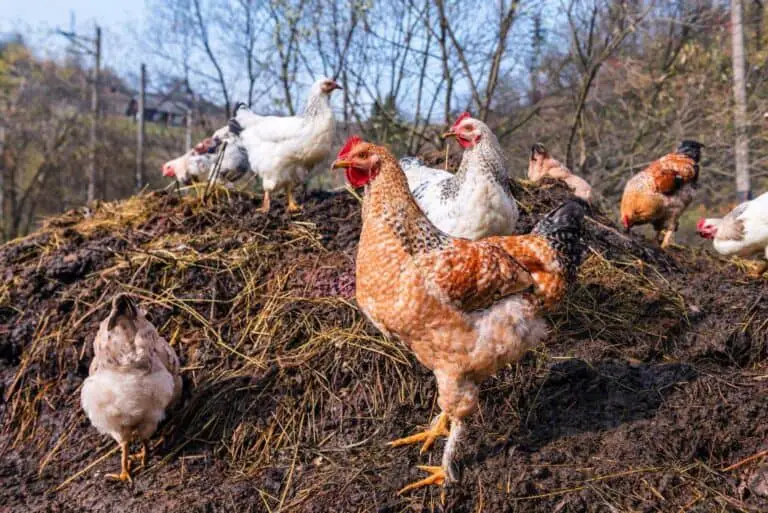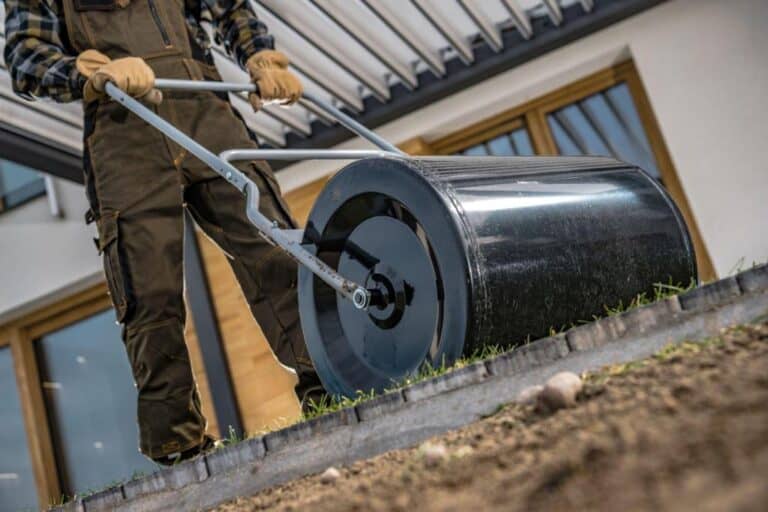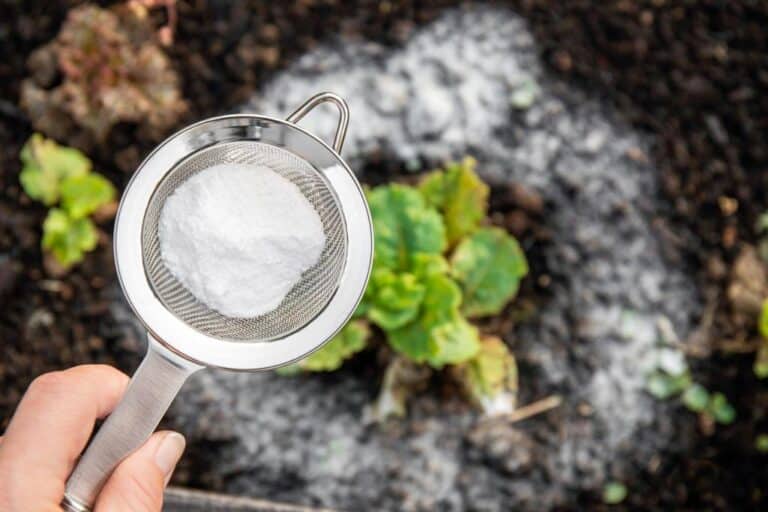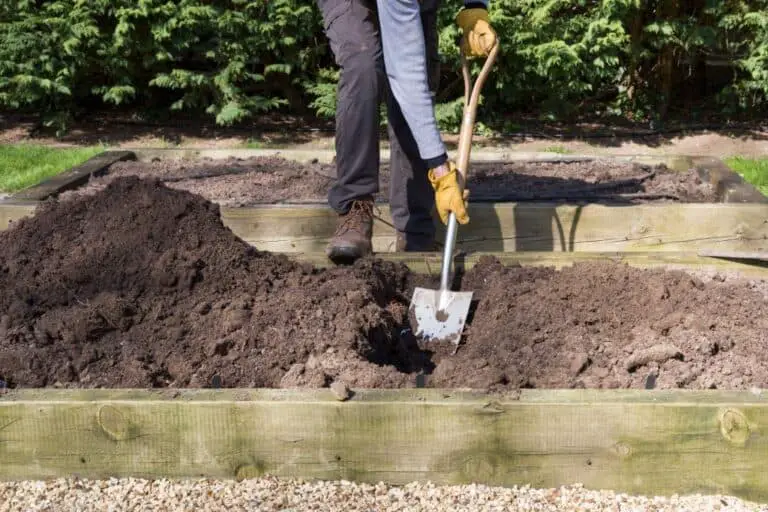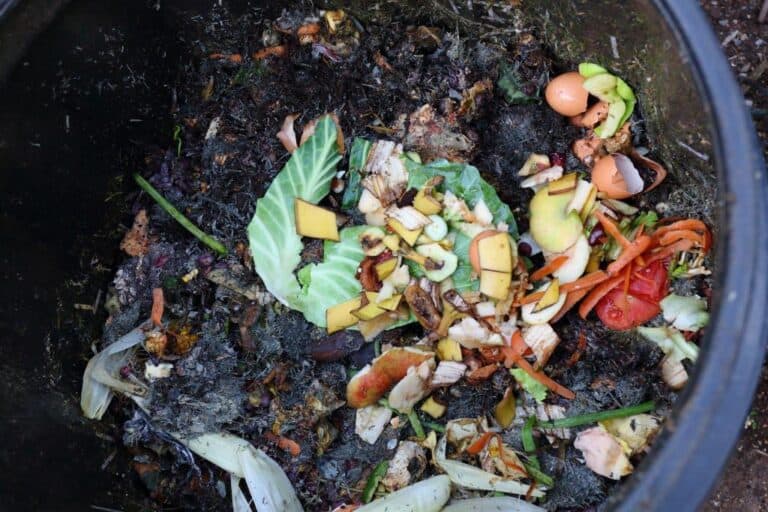Soil Preparation and Improvement for Rocky Terrain (Step-by Step Guide)
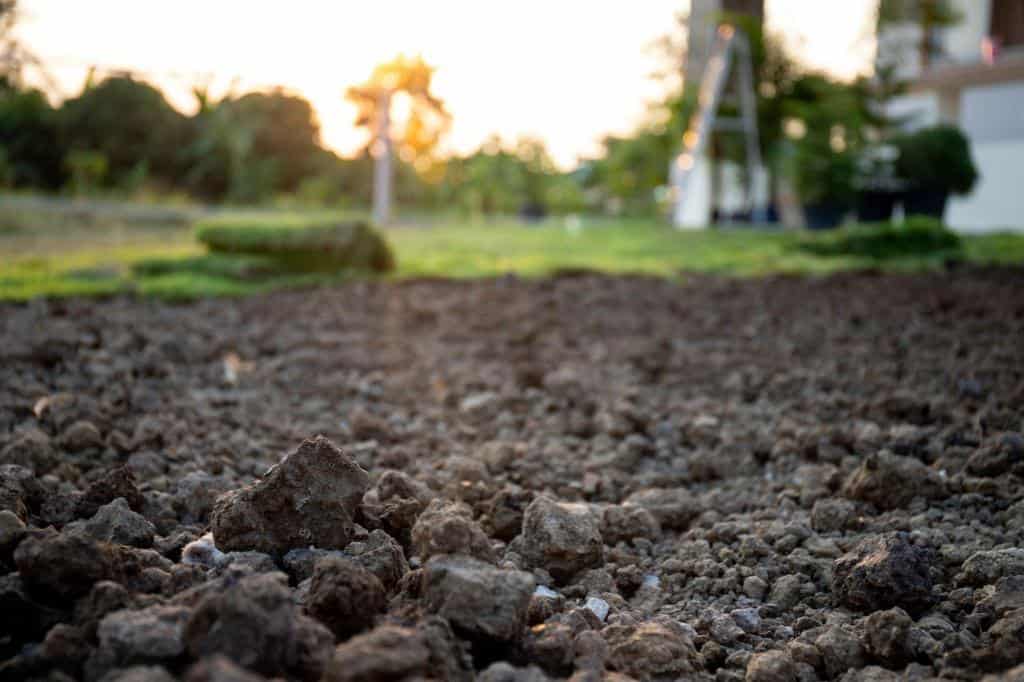
Welcome to the rocky terrain, a land of rugged beauty and unique challenges for gardeners and farmers alike. Taming the rocky soil may seem like a daunting task, but fear not! With the right approach and a touch of determination, you can transform this rough terrain into a flourishing oasis.
In this comprehensive guide, we will walk you through the art of soil preparation and improvement for rocky terrain. From assessing the soil’s composition to selecting the perfect plants that thrive in such conditions, we’ve got you covered. Whether you’re a seasoned gardener seeking new gardening adventures or a farmer looking to harness the potential of rocky soil, this guide is your key to success.
So, roll up your sleeves, put on your gardening gloves, and let’s embark on a journey to unlock the secrets of cultivating a vibrant and fruitful landscape amidst the rocks. It’s time to turn rocky challenges into opportunities for growth and create a garden that defies all odds!
Difficulties Faced by Farmers in Rocky Terrain
Farming on rocky soil can be a daunting task for agriculturalists. The presence of rocks and stones poses several challenges that affect crop growth and overall productivity. Here are some of the difficulties faced by farmers in rocky terrain:
- Limited Nutrient Access: The abundance of rocks in the soil creates obstacles for plant roots to penetrate and access essential nutrients. As a result, crops may struggle to obtain the required nourishment, leading to stunted growth and reduced yields.
- Water Drainage Issues: Rocky terrain often has poor water drainage, as the rocks restrict the movement of water through the soil. Excessive water retention can result in waterlogged soil, causing root rot and other water-related issues for crops.
- Soil Erosion: Rocky terrain is susceptible to soil erosion, especially during heavy rainfall. The lack of sufficient plant cover and the uneven terrain contribute to the washing away of soil, further reducing land stability and crop productivity.
- Limited Space for Planting: The uneven surface of rocky terrain makes it challenging to create even rows for planting. Farmers may need to adapt their planting techniques and explore alternative methods to optimize space usage.
Despite these challenges, farming on rocky terrain is not impossible. With proper soil preparation, suitable crop selection, and smart farming practices, agriculturalists can overcome these difficulties and create a thriving and productive farm in even the most challenging terrain.
Soil Preparation and Improvement for Rocky Terrain (Step-by Step Guide)

Step 1: Assess the Rocky Soil
Before embarking on any gardening or farming project in rocky terrain, it’s crucial to assess the soil’s condition. Understanding the soil’s composition, drainage, and nutrient levels will guide your soil improvement efforts. Here’s how you can assess the rocky soil:
- Visual Inspection: Examine the soil to identify the types and sizes of rocks, stones, and gravel present. This will give you an idea of the soil’s rock-to-soil ratio and overall texture.
- Drainage Test: Dig a small hole and fill it with water. Observe how quickly the water drains. If water takes a long time to drain, it indicates poor drainage, which may need to be addressed.
- Soil Test: Perform a soil test to determine the nutrient content and pH level. This will help you understand if the rocky soil lacks essential nutrients for plant growth.
Step 2: Clear the Area
Clearing the rocky terrain of any large rocks and debris will make it easier to work with the soil and prepare it for cultivation. Here’s what you can do:
- Remove Large Rocks: Clear the area of large rocks that may obstruct planting or pose safety hazards.
- Create Rock Piles: If possible, gather the removed rocks and create rock piles around the garden area. These rock piles can serve as natural barriers, retaining heat and protecting against erosion.
Step 3: Add Organic Matter
Adding organic matter is crucial for improving the fertility and structure of rocky soil. Compost, aged manure, and other organic materials can do wonders for enhancing the soil’s quality. Here’s how to add organic matter:
- Compost: Apply a generous layer of compost to the rocky soil and mix it in thoroughly. Compost not only enriches the soil with nutrients but also enhances its water-holding capacity.
- Aged Manure: If available, incorporate aged manure into the soil. Manure is an excellent source of organic matter that can boost soil fertility and promote healthy plant growth.
Step 4: Consider Raised Beds
Raised beds are an excellent option for gardening in rocky terrain. They provide better control over soil quality, drainage, and temperature. Here’s how to create raised beds:
- Select a level area with adequate sunlight for your raised beds.
- Build raised beds using wood, stone, or other materials. Ensure they are deep enough to accommodate plant roots and provide ample space for the rocky soil to be amended with organic matter.
- Fill the raised beds with a mixture of compost, fertile topsoil, and any other soil amendments needed for optimal plant growth.
Step 5: Choose Suitable Plants
Selecting plants that are well-suited for rocky terrain is essential for successful gardening or farming. Drought-resistant plants with shallow root systems tend to perform best in such conditions. Here are some suitable plant options:
- Cacti and Succulents: These water-wise plants thrive in rocky soil due to their ability to store water in their leaves and stems.
- Herbs: Herbs like thyme, rosemary, and lavender are well-adapted to rocky terrain and can add both beauty and flavor to your garden.
- Native Plants: Choose native plants that naturally grow in rocky environments. They are already acclimated to the local conditions and will require less maintenance.
Step 6: Mulch and Protect
Mulching plays a vital role in rocky terrain gardening. It helps retain moisture, suppress weeds, and protect the soil from erosion. Here’s how to mulch and protect your garden:
- Mulch Application: Apply a layer of organic mulch, such as straw or wood chips, around your plants. Make sure not to cover the plant stems.
- Weed Management: Regularly inspect your garden for weeds and remove them promptly to prevent competition for nutrients.
- Erosion Control: If your rocky terrain is on a slope, consider using erosion control measures like terracing to prevent soil erosion during heavy rains.
Step 7: Irrigation
In rocky terrain, irrigation plays a crucial role in maintaining adequate moisture levels for plant growth. Here’s how to ensure proper irrigation:
- Drip Irrigation: Consider using drip irrigation systems to deliver water directly to the plant roots, minimizing water loss through evaporation.
- Watering Schedule: Establish a consistent watering schedule that provides plants with the appropriate amount of water without over-saturating the rocky soil.
Step 8: Regular Maintenance
To keep your garden or farm in rocky terrain flourishing, regular maintenance is essential. Here are some maintenance tips:
- Pruning: Regularly prune plants to promote healthy growth and remove any dead or diseased parts.
- Fertilization: Monitor plant growth and provide additional fertilization if needed to supplement nutrient deficiencies in the rocky soil.
- Monitor Soil Conditions: Continuously monitor the soil’s moisture and nutrient levels, adjusting irrigation and fertilization as required.
By following these step-by-step guidelines, you can transform rocky terrain into a thriving garden or productive farm. Embrace the challenges of gardening in rocky soil, and with the right approach, you’ll be rewarded with a beautiful and bountiful space. Happy gardening!
Managing Nutrient and pH Levels in Rocky Soil
Understanding nutrient deficiencies in rocky soil
Rocky soil is notorious for its limited nutrient content, making it less fertile for crops to thrive. Nutrient deficiencies can hinder plant growth and lead to lower yields. However, identifying the specific nutrient deficiencies through soil testing allows farmers to tailor their approach and address the exact requirements of their crops.
Applying soil conditioners and mineral supplements
To enhance the fertility of rocky soil, farmers can introduce soil conditioners and mineral supplements. Organic matter, such as compost and well-rotted manure, can significantly improve soil structure and nutrient availability. Additionally, incorporating mineral supplements, like phosphate and potassium, helps replenish essential elements required for healthy plant development.
Balancing pH levels for optimal plant growth
Maintaining the right pH levels in rocky soil is crucial for optimal plant growth. The pH scale ranges from acidic to alkaline, with neutral soil having a pH of 7. Most crops prefer slightly acidic to neutral pH levels, typically between 6.0 and 7.0. Adjusting the pH through lime application or other soil amendments ensures that plants can access nutrients efficiently.
Preventing nutrient leaching in rocky terrain
Nutrients are more susceptible to leaching in rocky areas, which is the process of having essential elements washed away by rain or irrigation. To prevent nutrient loss, farmers can adopt water management practices such as controlled irrigation and mulching. These practices not only conserve water but also reduce the risk of nutrient leaching, maintaining a nutrient-rich environment for crops.
Selecting Plants for Rocky Soil Conditions
Indeed, certain plants have adapted remarkably to thrive in rocky soil conditions, showcasing their resilience and ability to flourish where others struggle. These plants have evolved unique strategies to navigate the challenges posed by rocky terrains, making them ideal choices for gardening or farming in such environments.
1. Drought-Resistant Crops: In rocky soil, water retention can be challenging, and drought-resistant crops have honed the art of surviving in water-scarce conditions. Cacti and succulents are shining examples of plants that excel in rocky terrain. Their ability to store water in their stems and leaves enables them to withstand prolonged periods of drought, making them ideal choices for arid landscapes.
2. Shallow-Rooted Plants: The presence of rocks and stones can create physical barriers for plant roots to penetrate deep into the soil. As a result, plants with shallow root systems perform better in rocky terrain. Herbs like thyme, rosemary, and lavender are well-suited for such conditions, as they can efficiently access nutrients in the top layers of the soil.
3. Native Flora: Native plants, which have adapted over generations to the local environment, often thrive in rocky terrains. They are well-acclimated to the specific climate, soil, and other factors present in the area, making them resilient and low-maintenance choices for rocky soil conditions.
By choosing plants that have evolved to thrive in rocky terrain, gardeners and farmers can create sustainable and vibrant landscapes. These plants not only enhance the beauty of rocky gardens but also contribute to the preservation of local biodiversity and environmental balance. Embracing the natural adaptations of these plants allows us to work in harmony with nature and celebrate the unique qualities of rocky soil.
No-Till Farming Techniques for Rocky Terrain
Traditional plowing and tilling have long been synonymous with farming, but there’s a new ally in town – no-till farming. If you’re dealing with rocky soil, this technique can be a game-changer. No-till farming involves minimizing soil disturbance, which has several benefits, especially for rocky terrains.
1. Soil Structure Preservation: In rocky soil, the presence of rocks and stones already disrupts the natural soil structure. No-till farming avoids further disturbance, preserving the existing soil structure. This is crucial for supporting healthy root systems and ensuring better water and nutrient retention.
2. Erosion Prevention: With traditional plowing, the soil is left exposed, making it susceptible to erosion, especially in areas with sloping terrain. No-till farming acts as a protective shield for the soil, reducing the risk of erosion caused by wind and water. This is particularly advantageous in rocky terrain, where erosion can exacerbate the challenges faced by crops.
3. Improved Soil Health: No-till farming encourages the buildup of organic matter on the soil surface, enriching the soil and supporting beneficial soil microbes. The increased organic matter enhances soil fertility and structure, making it more conducive to plant growth.
By embracing no-till farming techniques, farmers can work in harmony with the natural characteristics of rocky soil. This approach not only minimizes soil disruption but also promotes soil health and sustainability. So, say goodbye to traditional plowing and tilling, and welcome a more sustainable and soil-friendly farming method. With no-till farming, your rocky terrain can become a fertile and thriving space for your crops.
Erosion Control and Land Stabilization
While rocky soil provides some natural erosion control, it is essential to identify areas at risk of erosion. Slopes and embankments are particularly vulnerable, especially during heavy rainfall. Conducting a thorough assessment allows farmers to target specific locations that require erosion control measures.
Erosion control measures play a critical role in preserving soil structure and preventing land degradation. Techniques such as contour plowing, mulching, and the use of erosion control fabrics can effectively minimize the impact of erosion on rocky land.
Planting vegetation on slopes and embankments helps stabilize the soil and prevent erosion. Grasses with deep root systems, ground covers, and native shrubs are excellent choices for erosion control in rocky terrain.
In some cases, engineering solutions may be necessary to address severe erosion issues. Terracing, retaining walls, and gabion structures are engineering options that provide additional stability to rocky soil and protect it from erosion.


